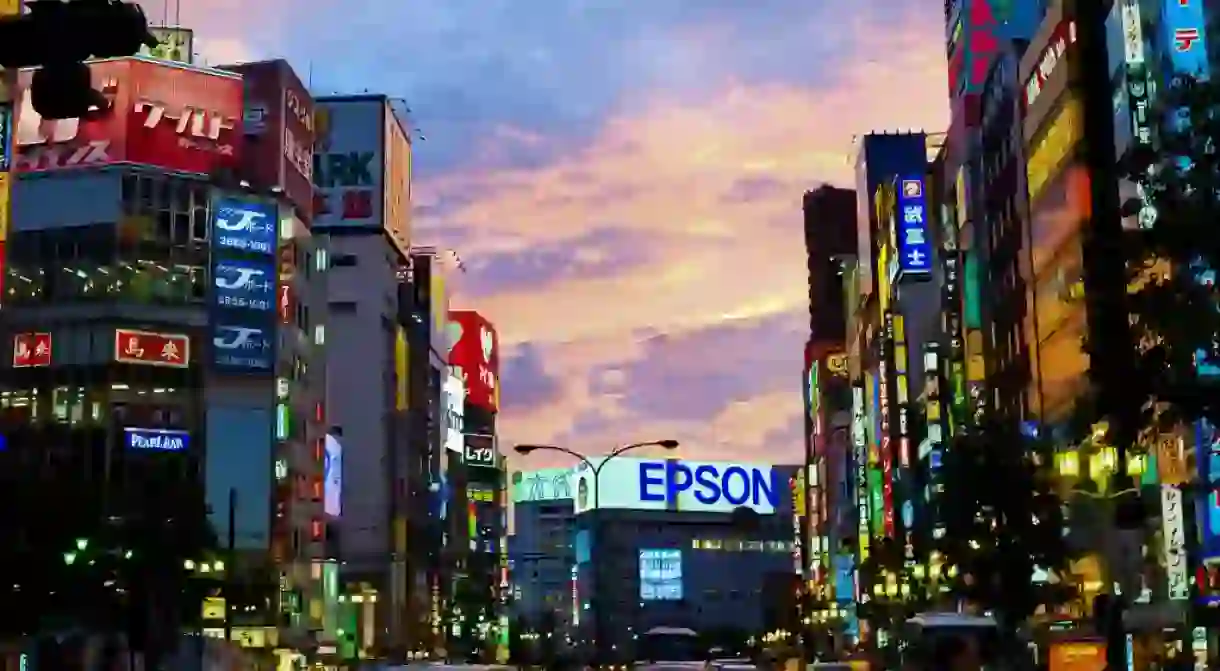7 Places in Asia that Inspired Blade Runner 2049

The sci-fi sequel Blade Runner 2049 has already been acclaimed by critics as one of the best films of the year. And like its 1982 predecessor, its visual language is hugely influenced by Asian culture. Here are some real-world locations whose influence can clearly be felt in the film’s jaw-dropping cityscapes.
Shinjuku, Tokyo

Japan’s capital is a monolithic city of nearly 38 million people. Of its 23 wards, it is the city’s entertainment and business district which had the most impact on the look of the first Blade Runner movie, and its influence carries over into the sequel. The area is teeming with tens of thousands of neon signs beckoning customers to sample everything from hostess bars to convenience stores and pachinko parlours. The Golden Gai, a network of alleyways housing miniscule bars and restaurants, is dizzyingly rich with atmosphere and enough to make any visitor feel like they are already in a sci-fi dystopia.
Shilin Night Market, Taipei

The sprawling night market in the Taiwanese capital is densely-packed with stalls which provide visitors with everything from clothes to toys and local culinary specialities. The spot is one of the biggest and most popular across the whole city, not to mention one of the smelliest owing to the unique foods cooked there, though all vendors are required to adhere to the city’s strict food safety laws. If you are on the hunt for a Blade Runner-esque bowl of noodles then this is the perfect place to visit.
Nanjing Road, Shanghai

The pedestrianised shopping area of Shanghai is in some ways an assault on the senses, as brightly lit facades compete for business while discordant electronic voices ring out from many of them, luring in customers to take a closer look. In keeping with the cinematic spectacle of the Blade Runner films, it is suitably huge, taking up over three miles of Shanghai’s main shopping street, which is one of the busiest in the world.
Mong Kok, Hong Kong

Hong Kong’s colonial history means it is a melting pot which directly inspired Ridley Scott when he was making his 1982 original (he once said that the city was his first choice for a filming location but he couldn’t afford it), with different languagaes and cultures bouncing off of each other to create an area that feels utterly unique. The location was also a major influence on Mamoru Oshii’s original anime version of Ghost In The Shell.
Marina Bay Sands, Singapore

Both Blade Runner movies are characterised by stunning shots of leviathan-like architecture, looming ominously on the landscape. Singapore’s architecture may not be quite as brutal but its massive $8 billion resort complex isn’t too far off, with its decadent three towers standing out in the skyline, a symbol of opulence not unlike the faded, ruined Las Vegas that Ryan Gosling’s Officer K visits in Blade Runner 2049.
Nijo Castle, Kyoto

The serene interiors of the former imperial residence were a direct influence on Blade Runner 2049 production designer Dennis Gassner, who used them as a motif for the headquarters of the film’s villain Niander Wallace, played by Jared Leto. In particular he homages the castle’s trademark squeaky floors, not a sign of poor carpentry but instead an intentional security measure which meant that it would be impossible to sneak around at night without making noise and being detected.
Dotonbori, Osaka

Like Shinjuku but more gaudy, the bright lights of Osaka’s shopping and entertainment district are a big draw with visitors and residents in the Japanese metropolis. In the not-too-distant future, it’s easy to picture the area housing the sort of skyscraper-sized holograms as seen in the new Blade Runner film. The iconic Glico sign provides an enormous, iconic landmark which glows over the Dotonbori canal.













